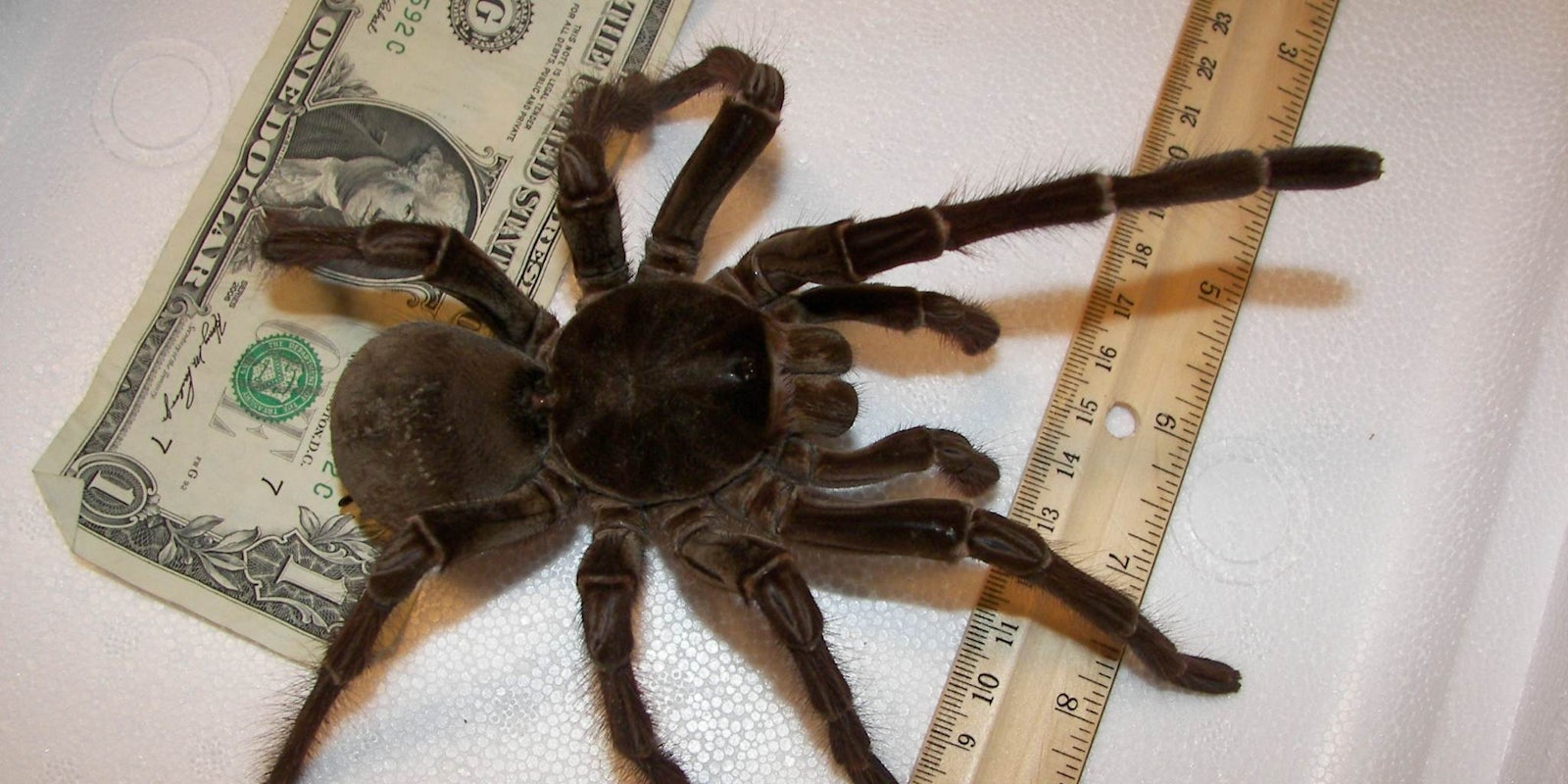The dark of the Amazon rainforest’s night is brimming with sounds—the stridulations of insects, the calls of nocturnal critters, and the skittering tap of… giant spiders advancing across the forest floor.
That’s the scene that entomologist Piotr Naskrecki describes in a recent blog post about his encounter several years ago with a South American Goliath birdeater spider:
I pressed the switch and pointed the light at the source of the sound, expecting to see a small mammal, a possum, a rat maybe. And at first this is what I thought I saw—a big, hairy animal, the size of a rodent. But something wasn’t right, and for a split second the atavistic part of my brain sent a ping of regret that I didn’t bring any companion with me on this particular night walk. But before that second was over I was lunging at the animal, ecstatic about finally seeing one of these wonderful, almost mythical creatures in person.
Goliath birdeaters claim the title of the largest spiders in the world. These huge tarantulas sport a leg span that can stretch to nearly a foot and they can weigh in at 170 grams or “about as much as a young puppy,” Naskrecki writes. Note that this would be a very small puppy, weighing as much as 2/3 of a cup of water.
They don’t eat birds usually, because spiders (thankfully) don’t fly. But they do eat mice, as this NatGeoWild video shows. Fangs up to an inch long and a toxic bite help them capture their prey.
After science journalist Tanya Lewis of Livescience.com interviewed Naskrecki the story went viral. For some reason, the phrase “puppy-sized spider” really seems to get people’s attention. But never fear arachnophobes, this is about as big as your nightmare can get. Science (and math) prevents spiders from getting much bigger.
Exoskeletons are a good solution for protection and support, but only up to a point. Get any bigger and the spiders’ exoskeleton would have to be too thick for its legs to move. Molting would also present a problem as the spiders would be vulnerable for too long. Spiders aren’t insects, but like bugs they have an open circulatory system and many have breathing tubes called tracheae that are held open by chitin, the same protein that makes up their exoskeleton. Larger insects and spiders wouldn’t be able to circulate their blood or have enough oxygen flow through their tracheae to reach areas deep in their body.
“Also, because animals shed heat through their surface, a house-sized spider would also likely overheat,” writes Lisa Suhay for The Christian Science Monitor. So relax, dog-sized spiders are not a thing.
If the hairs on the back of your neck are already raised, you may not be ready for what I’m sharing next. Or you may relish it. Apparently these dinner-plate-sized spiders do in fact go well on a dinner plate—or at least a leaf. Kids living in the rainforests goliath spiders call home learn early that “tarantulas are best served toasted like marshmallows,” according to this clip from BBC One’s Human Planet.
“When they start squeaking, which is just air escaping from the joints, they’re almost done,” the narrator says. Apparently they taste like crab.
photo via snakecollector/Flickr.com (CC BY 2.0)


